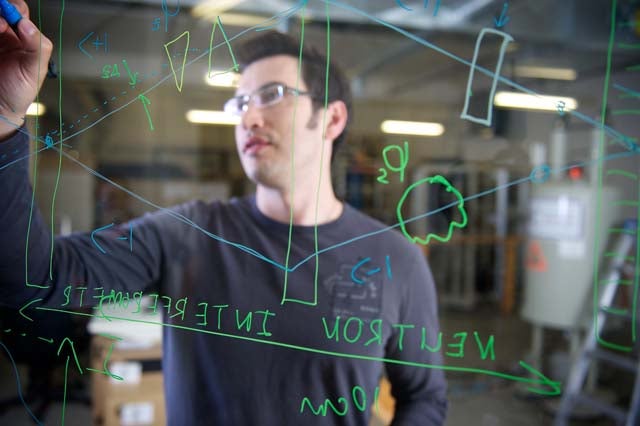Monday, December 12, 2011
Researchers at IQC and NIST have advanced sensor technology with a new approach to neutron interferometry that is smaller, faster and more resilient than its predecessors.

The team pioneered a new approach to neutron interferometry, which uses the wave properties of neutrons to measure the properties of sample materials. Utilizing neutrons as probes, researchers can unveil a range of information about a sample material, such as its magnetic and structural properties.
But neutron interferometry has always presented a difficult hurdle: the instruments are extremely sensitive to disturbance — so sensitive, in fact, that they must be housed inside a large blockhouse shielded from the slightest vibrations and temperature fluctuations.
The new advance by IQC researchers David Cory and Dmitry Pushin, and NIST researcher Michael Huber, was to make the interferometer much more resistant to such disturbance, eliminating the need for the large blockhouse.
Inspired by work in quantum error correction, they modified the interferometer itself, which is roughly the the size of a soda can and has three thin silicon "blades" jutting from its surface. The blades split a neutron beam into two, sending one beam through the sample material before recombining with the other beam for measurement.
The team's modification — a fourth blade added to the device — allowed them to cancel out many of the disturbances that plagued three-blade interferometry. What's more, the modified interferometer can be set up closer to the source of neutrons, which increases the speed and accuracy with which data can be generated.
"Before, we had some experiments than ran over several months," said Pushin, a research assistant professor at IQC. "Now we can shorten each of those experiments to just a few weeks."
Instead of housing the experiment inside a garage-like blockhouse, the new interferometer can be housed inside a unit no larger than a typical refrigerator.
The team's techniques and results were summarized in Physical Review Letters and were recently profiled in an article on PhysOrg.com.